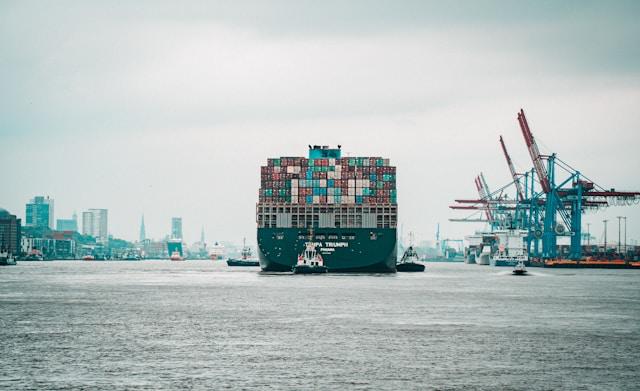
When it comes to the highly competitive world of retail, having an efficient supply chain can be the deciding factor between success and failure. It is necessary to optimize each stage of the supply chain process, beginning with the procurement of raw materials and ending with the delivery of products to clients, to guarantee profitability, achieve customer happiness, and maintain sustainability. This article will go into six specific tactics that retail organizations may apply to develop an effective supply chain.
Embrace Technology
The most up-to-date software for managing supply chains provides a profusion of tools and features intended to simplify operations and enhance efficiency. Retailers can make decisions based on data thanks to the software solutions that enable real-time visibility into inventory levels, the performance of suppliers, and demand forecasts. Automating operations like order processing, inventory monitoring, and logistics management allows firms to reduce the number of errors caused by human intervention, minimize lead times, and maximize the utilization of available resources. In addition, technology such as RFID tagging, barcode scanning, and advanced analytics have the potential to further improve the visibility of supply chains and ensure that operations are carried out efficiently.
Build Strong Relationships With Suppliers
Having strong ties with one’s suppliers is essential to the success of any supply chain. Establishing solid partnerships that are founded on trust, openness, and the pursuit of mutual benefits is necessary to guarantee a consistent supply of high-quality products. Maintaining consistent communication, implementing feedback systems, and working together to find solutions to problems can deepen these connections and cultivate a sense of shared accountability. The ability to better predict fluctuations in demand, negotiate favorable terms, and proactively manage any interruptions in the supply chain is afforded to merchants who maintain tight relationships with their relevant suppliers.
Optimize Inventory Management
It is essential to have efficient inventory management to strike a balance between supply and demand, while simultaneously decreasing expenses and boosting profits. As a result of the fact that shipping containers offer a safe and standardized means for packaging and transporting goods, they are an excellent choice for inventory management across the supply chain. Procuring used shipping containers for sale for distribution centers or temporary facilities allows merchants to easily arrange and track inventory, improve order fulfillment operations, and assure prompt replenishment of stock at retail locations. These benefits can be achieved through the utilization of various containers.
Streamline Logistics
Optimization of logistics plays a significant part in ensuring that products are delivered promptly and at a cost-effective price. Retailers can analyze their transportation networks, distribution channels, and warehousing facilities to find different areas in which they may make improvements. Increasing the efficiency of delivery while simultaneously lowering transportation costs can be accomplished through the consolidation of shipments, the optimization of delivery routes, and the utilization of third-party logistics (3PL) providers. In addition, making investments in technology such as global positioning system (GPS) tracking, fleet management software, and warehouse automation systems can improve operational visibility and streamline logistics operations.
Prioritize Sustainability
Retailers are required to incorporate sustainable business practices into their supply chain operations to meet the environmental concerns that are becoming increasingly significant to customers. This involves the procurement of materials that are friendly to the environment, the utilization of renewable energy sources, and the reduction of waste throughout the processing of production and distribution. Retailers can also give priority to suppliers who have ethical labor standards and sustainable business practices. This will ensure that their supply chain is both socially responsible and ecologically mindful. Through the promotion of sustainability, merchants have the power to improve their brand reputation, attract environmentally sensitive customers, and contribute to a more sustainable future.
Continuously Monitor And Adapt
The optimization of the supply chain is a continual process that calls for consistent monitoring, analysis, and adaptation. Retailers can track the efficiency of their supply chains by setting up metrics and key performance indicators (KPIs). The inventory turnover rate, the order fulfillment rate, and the on-time delivery rate are all instances of such measurements. Retailers can identify areas that require improvement and put corrective steps into place as required if they monitor these indicators and benchmark them against industry standards. Furthermore, keeping up with the latest industry trends, technology breakthroughs, and regulatory changes can assist retailers in anticipating future difficulties and opportunities, which in turn enables them to maintain their agility and responsiveness in a business environment that is always changing.
Conclusion
Developing a supply chain that is both effective and efficient is a complex task that calls for meticulous planning, smart alliances, and ongoing development. A supply chain that can drive profitability, improve customer satisfaction, and ensure long-term success in the competitive retail landscape can be constructed by retailers through the adoption of technology, the establishment of strong relationships with suppliers, the optimization of inventory management, the streamlining of logistics, the prioritization of sustainability, and the continuous monitoring and adaptation to changing market conditions.
You may also read
Music schools in Nairobi: The Pinnacle Music Schools in Nairobi





